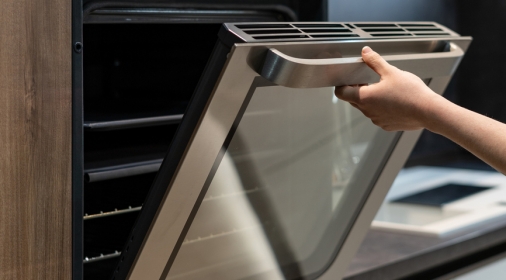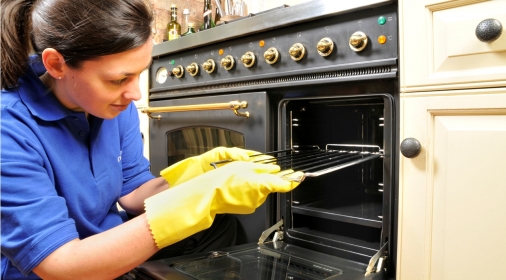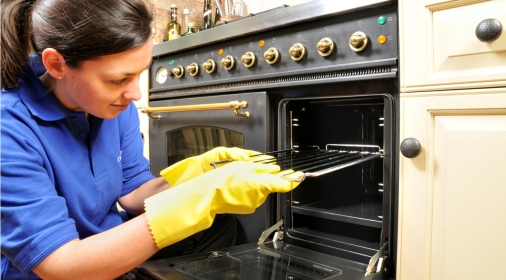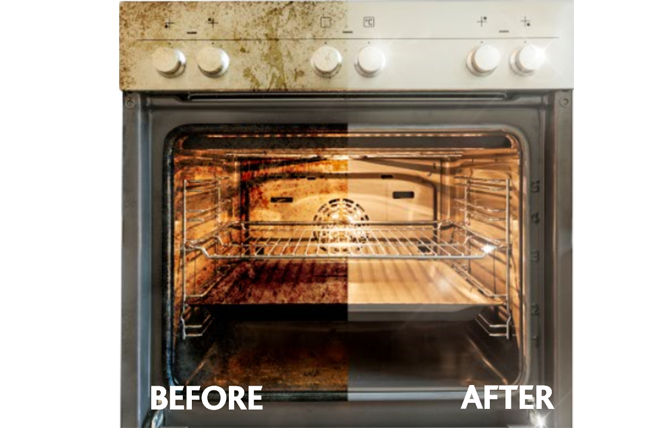Self-Cleaning Ovens: How They Work & Cleaning Tips
Self-cleaning ovens, also known as auto clean ovens or automatic cleaning ovens, are designed to make kitchen maintenance easier by reducing or eliminating the need for manual cleaning. However, while they promise less effort, they still require some care and understanding to use them properly and safely.
In this ultimate guide, we’ll look at what a self-cleaning oven is, how it works, how to use and clean one safely, and when it might be best to call in a professional.
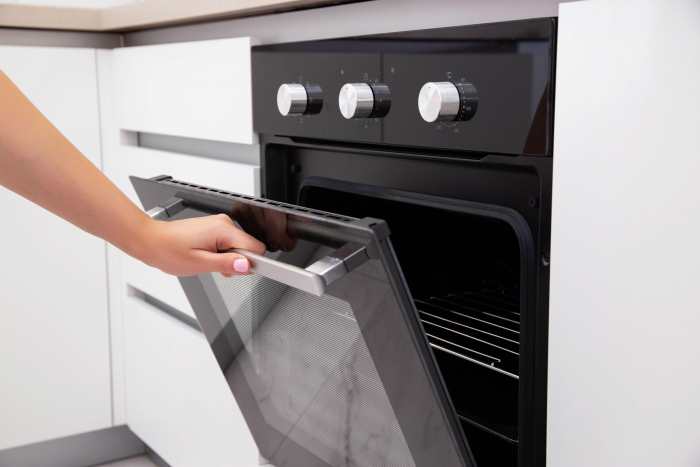
What is a Self-Cleaning Oven?
A self-cleaning oven is an appliance that uses high heat or steam to remove food residue and grease from the interior. The two main types of self-cleaning ovens are:
- Pyrolytic Oven
Also known as a pyrolytic self-clean oven, this type uses extreme heat (around 400-500°C) to incinerate leftover food and grease, turning them into ash that can be easily wiped away.
- Catalytic Oven
These ovens feature liners that absorb grease during everyday cooking. When the oven reaches high cooking temperatures, the liners break down the residue automatically.
- Steam Clean Ovens
These use water and heat to create steam that loosens grime inside the oven. While gentler, they may not be as thorough as pyrolytic cleaning.
How Does a Self-Cleaning Oven Work?
Pyrolytic Cleaning
How does a self-cleaning oven work, particularly the pyrolytic kind?
The pyrolytic setting locks the oven door and heats the interior to around 500°C. This burns off spills, grease, and food remnants, reducing them to fine ash. After cooling, you simply wipe away the ash with a damp cloth.
Catalytic Cleaning
Catalytic liners absorb grease during normal use. These ovens don’t require a separate cleaning cycle; rather, frequent high-temperature cooking helps break down debris gradually.
Steam Cleaning
Water placed in the bottom of the oven is heated to create steam, loosening dirt. It’s best for light cleaning and short cycles.
How to Use a Self-Cleaning Oven Properly
Using your oven’s self-clean function correctly is essential to avoid damage or hazards:
- Remove oven racks, especially if they are not pyrolytic-safe.
- Wipe away loose debris beforehand to prevent smoking.
- Ventilate the kitchen: open windows or use an extractor fan.
- Set the self-clean cycle and ensure the door locks.
- Allow the oven to cool completely before wiping out the ash.
Remember, how to clean a self-cleaning oven begins with reading your manual and understanding the specific self-clean function your model uses.
Safety Tips for Operating Self-Cleaning Ovens
While convenient, automatic cleaning ovens should be used with caution as they can be dangerous:
- Don’t use commercial oven cleaners on pyrolytic ovens unless explicitly allowed by the manufacturer. Consult your oven manual.
- Never force the oven door open during the cleaning cycle.
- Keep pets and children away from the kitchen during the cycle, especially if there are strong odours.
- Don’t leave the house while self-clean oven is running.
Cleaning a Self-Cleaning Oven Step-by-Step
Even self-cleaning ovens need occasional manual maintenance. Here’s how to keep yours in top shape:
Step 1: Routine Wipe Downs
Clean up spills when they happen to prevent excessive smoke during the cleaning cycle.
Step 2: Clean the Door Glass
Use a soft cloth and mild detergent, avoid abrasive scrubs.
Step 3: Check the Racks
Some racks are not suitable for self-cleaning cycles and need to be cleaned separately with warm soapy water.
Step 4: Remove Ash After Pyrolytic Cycle
Once cooled, wipe the ash with a damp cloth or vacuum with a nozzle attachment.
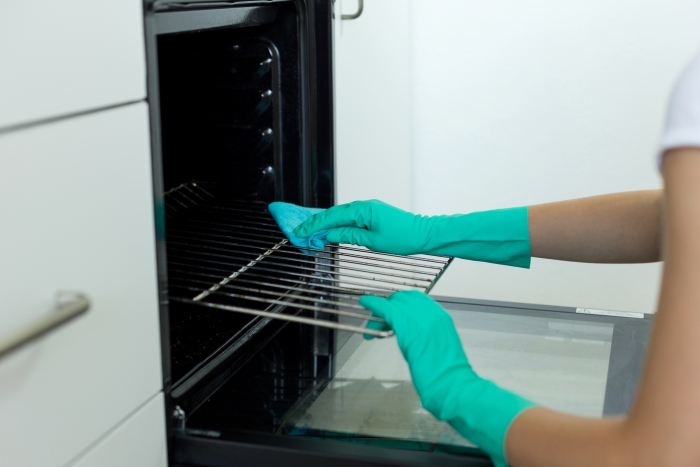
Pros and Cons of a Self-Clean Oven
Pros:
- Reduces need for harsh chemicals.
- Saves time and effort.
- Deep cleans hard-to-reach areas.
Cons:
- High heat cycles can produce strong odours.
- Not all residue is removed.
- Racks often must be cleaned manually.
- May increase energy use.
Self-Cleaning Oven vs Professional Oven Cleaning
While self-cleaning ovens are helpful, they aren’t always thorough, especially with baked-on stains or grease between glass panels. That’s where professional oven cleaning stands out:
| Feature | Self-Cleaning Oven | Professional Oven Cleaning |
| Chemical-Free | ✅ | ✅ (Eco-friendly options) |
| Deep Glass Panel Cleaning | ❌ | ✅ |
| Rack & Grill Cleaning | ❌ | ✅ |
| Smell-Free | ❌ (often smoky) | ✅ |
| Effort Required | Medium (some prep) | Low (fully handled) |
For a truly spotless finish, Ovenclean’s professional services go where auto clean ovens can’t.
FAQs
Are pyrolytic ovens worth it?
Yes, they offer deep cleaning at the touch of a button and reduce chemical use. However, regular use of the feature may increase energy bills.
Can I leave racks in pyrolytic oven?
Only if the racks are pyrolytic-safe. Otherwise, they should be removed and cleaned separately.
Do pyrolytic ovens use a lot of electricity?
They use more energy than standard cooking but only during the self-clean cycle. Modern models are becoming more energy-efficient.
How long does a pyrolytic oven take to self-clean?
Anywhere from 1.5 to 3 hours depending on the model and level of grime.
What is the difference between a pyrolytic oven and a normal oven?
A pyrolytic oven has a self-cleaning function that burns off dirt at high temperatures. Standard ovens must be cleaned manually.
Can you be in the house when your self-cleaning oven is on?
It’s safe but can be uncomfortable due to heat and odours. Ventilation is essential, and it’s best to keep pets and children away.
What is the symbol for self-cleaning an oven?
Usually, a square with dots or a fan inside, or a “lock” icon indicating the oven door is sealed during the cycle. Refer to your oven’s manual for the exact symbol.
Need help beyond what your oven can do? Request your free quote today!

